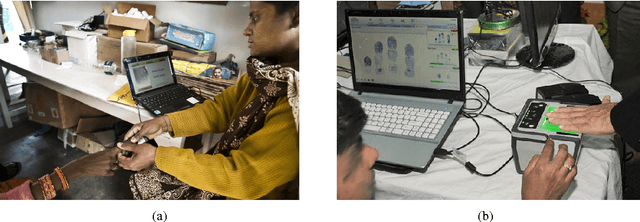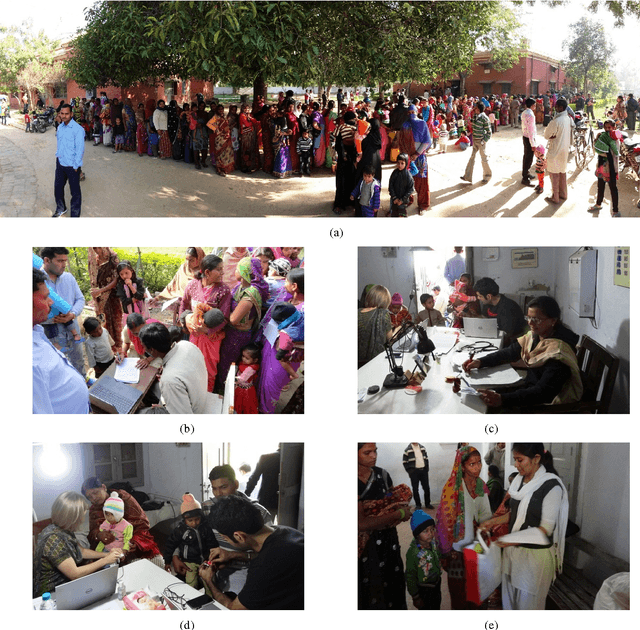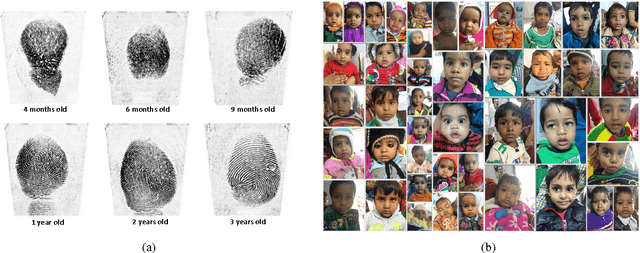Biometrics for Child Vaccination and Welfare: Persistence of Fingerprint Recognition for Infants and Toddlers
Paper and Code
Apr 17, 2015



With a number of emerging applications requiring biometric recognition of children (e.g., tracking child vaccination schedules, identifying missing children and preventing newborn baby swaps in hospitals), investigating the temporal stability of biometric recognition accuracy for children is important. The persistence of recognition accuracy of three of the most commonly used biometric traits (fingerprints, face and iris) has been investigated for adults. However, persistence of biometric recognition accuracy has not been studied systematically for children in the age group of 0-4 years. Given that very young children are often uncooperative and do not comprehend or follow instructions, in our opinion, among all biometric modalities, fingerprints are the most viable for recognizing children. This is primarily because it is easier to capture fingerprints of young children compared to other biometric traits, e.g., iris, where a child needs to stare directly towards the camera to initiate iris capture. In this report, we detail our initiative to investigate the persistence of fingerprint recognition for children in the age group of 0-4 years. Based on preliminary results obtained for the data collected in the first phase of our study, use of fingerprints for recognition of 0-4 year-old children appears promising.
 Add to Chrome
Add to Chrome Add to Firefox
Add to Firefox Add to Edge
Add to Edge